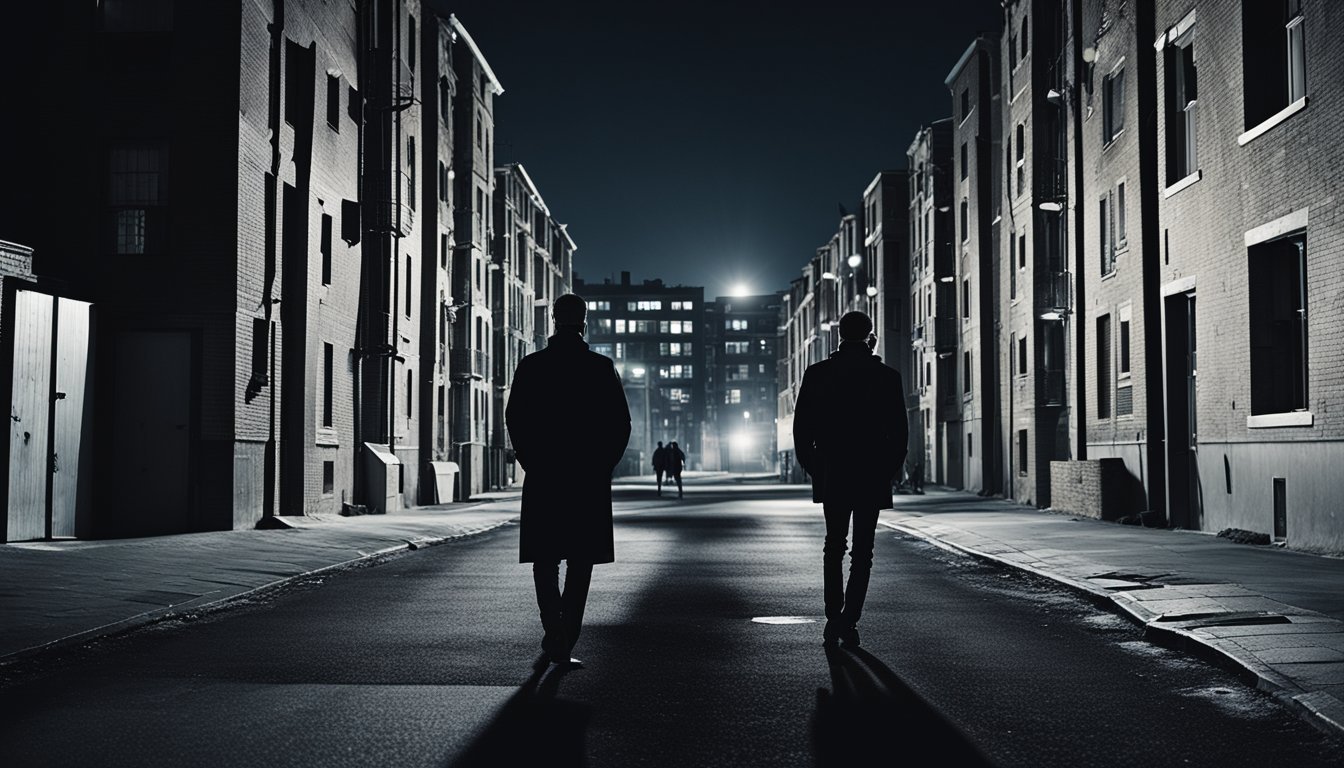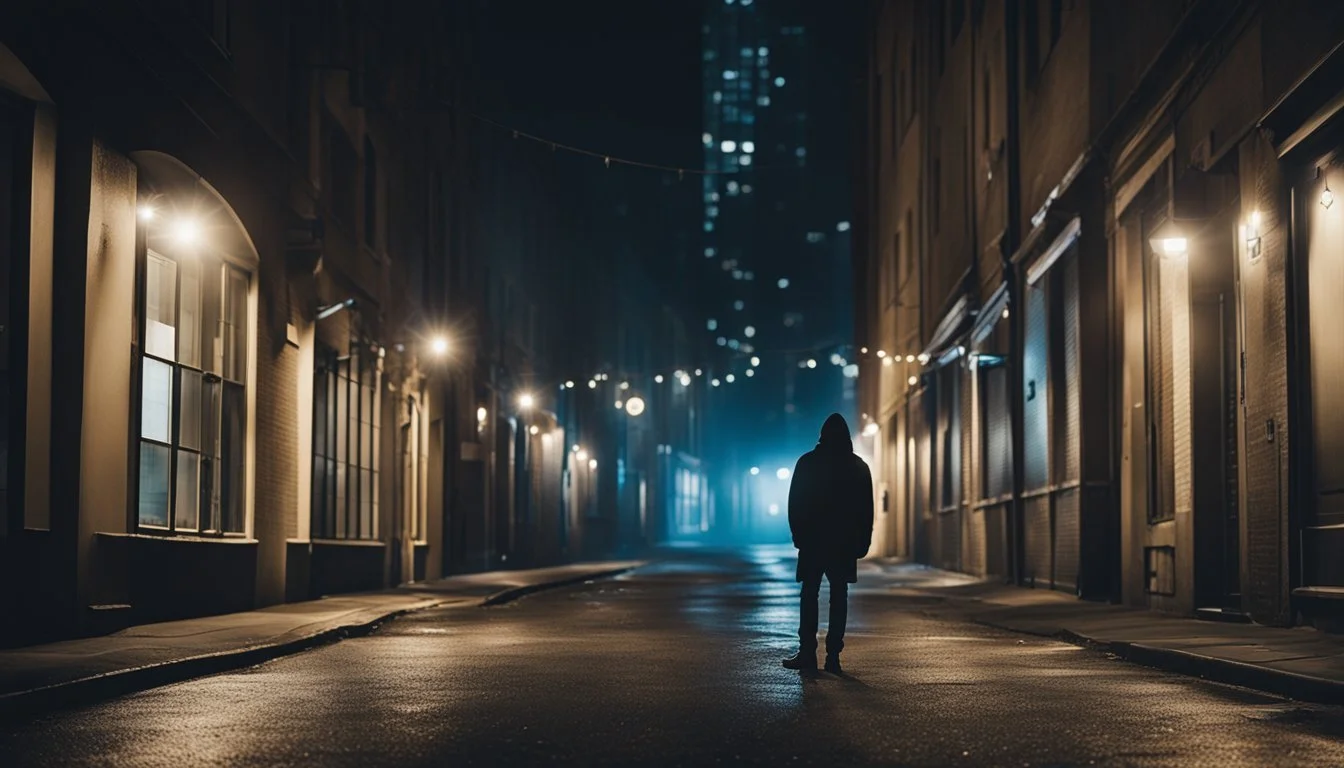Unmasking Apathy: Documentaries Revisit the Kitty Genovese Murder
The 1964 murder of Kitty Genovese in Queens, New York sparked widespread discussions about urban apathy and bystander behavior. Several documentaries have explored this infamous case, reexamining the facts and challenging long-held assumptions about what really happened that night.
These films shed new light on the Genovese murder, uncovering previously overlooked details and questioning the accuracy of initial media reports. By revisiting witness accounts and investigating the circumstances surrounding the crime, documentaries have helped reshape public understanding of this pivotal event in New York City history.
1) The Witness (2015)
"The Witness" is a documentary that revisits the infamous 1964 murder of Kitty Genovese in New York City. Directed by James D. Solomon, the film follows Kitty's brother, William Genovese, as he investigates the circumstances surrounding his sister's death.
The documentary challenges the widely reported narrative that 38 witnesses saw or heard the attack but did nothing to help. William Genovese interviews neighbors, police officers, and journalists involved in the case to uncover the truth.
Through his investigation, William discovers discrepancies in the original reporting and explores how the story became a symbol of urban apathy. The film examines the impact of media sensationalism and questions the accuracy of collective memory.
"The Witness" provides a personal perspective on the Kitty Genovese case, offering insights into her life and the lasting effects of her murder on her family. The documentary combines archival footage, reenactments, and interviews to present a comprehensive look at this pivotal event.
More information on "The Witness" (IMDb)
2) The Kitty Genovese Tapes
The Kitty Genovese Tapes is a documentary film that examines the infamous 1964 murder case. It features previously unreleased audio recordings from the original police investigation.
These tapes provide new insights into the events surrounding Genovese's death. They include witness statements and interviews with key individuals involved in the case.
The documentary challenges the widely accepted narrative of 38 witnesses who allegedly did nothing to help. It presents a more nuanced view of what actually transpired that night in Kew Gardens, Queens.
Through these recordings, viewers gain a deeper understanding of the complexities surrounding the case. The film sheds light on the initial police response and subsequent investigation.
The Kitty Genovese Tapes offers a fresh perspective on a case that has captivated public interest for decades. It encourages viewers to reconsider long-held assumptions about the murder and its aftermath.
The Kitty Genovese Tapes (2016) - IMDB
3) The Crime of Kitty Genovese
On March 13, 1964, Kitty Genovese was attacked outside her apartment building in Kew Gardens, Queens. The 28-year-old bar manager was stabbed multiple times by Winston Moseley.
The assault lasted for approximately 30 minutes and occurred in two separate attacks. Genovese initially survived the first attack but succumbed to her injuries after Moseley returned to assault her again.
The case gained notoriety when The New York Times reported that 38 witnesses had seen or heard the attack but did not intervene or call the police. This account sparked widespread public outrage and discussions about bystander apathy.
Subsequent investigations have questioned the accuracy of the initial reports. Some witnesses did attempt to help, and police were called. The exact number of witnesses and their actions remain disputed.
The Genovese murder became a symbol of urban indifference and prompted research into the "bystander effect" in social psychology. It continues to be studied and debated decades after the crime occurred.
Learn more about the Kitty Genovese murder
4) Kitty: Exposing the Truth
"Kitty: Exposing the Truth" (2023) is a documentary that challenges long-held beliefs about the Kitty Genovese murder. The film explores new evidence and perspectives on the infamous 1964 case.
Director Sarah Thompson interviews witnesses and experts to uncover facts previously overlooked. The documentary examines police reports, court transcripts, and media coverage from the time.
"Kitty" reveals that several neighbors did attempt to help Genovese during the attack. It also questions the widely reported number of 38 witnesses who allegedly ignored her cries for help.
The film features interviews with Genovese's family members, providing personal insights into her life. It also explores the impact of the case on crime reporting and bystander intervention studies.
"Kitty: Exposing the Truth" aims to restore Genovese's humanity and challenge the narrative that has defined her story for decades. The documentary encourages viewers to critically examine how media shapes public perception of crime.
More information on "Kitty: Exposing the Truth"
5) Mary Ann's Story
Mary Ann Zielonko, Kitty Genovese's roommate and partner, provides a compelling perspective in the documentary "The Witness" (2015). Her testimony sheds light on Kitty's life and their relationship.
Zielonko's account challenges some of the misconceptions surrounding the case. She offers intimate details about Kitty's personality and their life together in Queens.
Her involvement in the documentary helps humanize Kitty Genovese beyond her tragic fate. Zielonko's recollections provide valuable insights into the social context of the 1960s.
The filmmakers treat Mary Ann's story with sensitivity and respect. Her participation adds depth to the narrative and offers a personal connection to Kitty Genovese.
Through Mary Ann's eyes, viewers gain a more nuanced understanding of Kitty as a person rather than just a victim. Her story contributes significantly to the documentary's goal of reexamining the infamous case.
Learn more about "The Witness" (2015) on IMDb
6) The Silent Witnesses
"The Silent Witnesses: The Kitty Genovese Murder" is a documentary that delves into the infamous 1964 case. It examines the widely reported claim that 38 witnesses did nothing while Kitty Genovese was attacked and killed.
The film explores the disturbing questions raised by her death and the apparent apathy of bystanders. It investigates the circumstances surrounding the murder and the subsequent media coverage.
Narrated by David Ackroyd, the documentary features interviews with key figures involved in the case. It includes insights from family members, investigators, and experts in criminal psychology.
The documentary critically analyzes the popular narrative that emerged from the incident. It seeks to separate fact from fiction and provide a more nuanced understanding of the events that unfolded that night.
"The Silent Witnesses" offers viewers a chance to reassess their perceptions of the Kitty Genovese case. It encourages reflection on social responsibility and the complex factors that influence bystander behavior.
7) Justice Denied: The Kitty Genovese Case
"The Witness" (2015) reexamines the infamous Kitty Genovese murder case. Directed by James Solomon, this documentary follows Kitty's brother Bill Genovese as he investigates the truth behind his sister's death.
The film challenges the long-held narrative that 38 witnesses did nothing while Kitty was attacked. It explores how this story became distorted over time and its impact on public perception.
Through interviews and archival footage, "The Witness" uncovers new information about the case. It reveals that some neighbors did try to help, contrary to popular belief.
The documentary also delves into Kitty's life, presenting a more complete picture of who she was beyond the infamous crime. It humanizes her story and gives voice to her family's decades-long search for answers.
"The Witness" offers a nuanced look at media reporting and the complexities of human behavior in crisis situations. It demonstrates how a single event can shape societal attitudes and spark discussions about bystander intervention.
More information on "The Witness" (IMDb)
8) The 38 Who Saw Murder
The infamous claim that 38 witnesses saw Kitty Genovese's murder and did nothing has been a central focus of documentaries about the case. This aspect of the story originated from a New York Times article published shortly after the 1964 crime.
Several films have explored this controversial element. "The Witness" (2015) features Kitty's brother Bill Genovese reinvestigating the murder and challenging the narrative of 38 silent bystanders. More info
"38 Witnesses" (2012) is a French film loosely inspired by the Genovese case. It examines the psychological impact on a community when a crime goes unreported. More info
Documentaries like "A Crime to Remember: 38 Witnesses" (2014) have also delved into this aspect of the case. They typically analyze how the story of 38 witnesses spread and its societal impact.
Recent investigations have largely debunked the claim of 38 silent witnesses. Documentaries now often focus on how this myth developed and persisted for decades.
9) Solving the Mystery: Kitty Genovese
"The Witness" (2015) is a documentary that delves into the infamous Kitty Genovese murder case. The film follows Kitty's brother, William Genovese, as he reexamines the circumstances surrounding her death.
William investigates the widely reported claim that 38 witnesses saw or heard the attack but did nothing to help. Through interviews and archival footage, he uncovers new information about the case.
The documentary challenges the narrative that bystanders were apathetic. It reveals that some witnesses did attempt to help or call the police. The film also explores how the media sensationalized certain aspects of the story.
"The Witness" provides a nuanced look at the complexities of the case. It examines how the initial reports shaped public perception and influenced social psychology research on the bystander effect.
The documentary offers a personal perspective on the tragedy. It shows how the murder impacted Kitty's family and the lasting effects on her community.
More information on "The Witness" (2015)
10) In the Dead of Night: Kitty Genovese
In the Dead of Night: Kitty Genovese (2019) examines the infamous 1964 murder case that shocked New York City. The documentary revisits the crime scene in Kew Gardens, Queens, where 28-year-old Kitty Genovese was stabbed to death.
Director Melissa Cutler interviews historians, journalists, and local residents to piece together the events of that fateful night. The film explores how the initial New York Times report claiming 38 witnesses ignored Genovese's cries for help shaped public perception.
Through archival footage and reenactments, In the Dead of Night paints a vivid picture of 1960s New York. It delves into Genovese's life as a bar manager and her relationship with partner Mary Ann Zielonko.
The documentary challenges longstanding myths surrounding the case. It presents evidence that some neighbors did attempt to help or call the police. The film offers a nuanced look at how the incident sparked discussions about urban apathy and bystander behavior.
Overview of the Kitty Genovese Murder
The Kitty Genovese murder in 1964 shocked New York City and became a symbol of urban apathy. This case gained notoriety due to initial reports claiming numerous witnesses failed to intervene.
Incident Details
Kitty Genovese, a 28-year-old bar manager, was stabbed to death outside her apartment building in Kew Gardens, Queens on March 13, 1964. The attacker was Winston Moseley, a stranger who randomly targeted Genovese.
The crime occurred in the early morning hours as Genovese returned home from work. Moseley stalked and attacked her twice over the course of approximately 30 minutes.
Initial reports stated that 38 witnesses saw or heard the attack but did nothing to help. This narrative sparked outrage and debates about bystander intervention.
Timeline of Events
• 3:15 AM: Kitty Genovese arrives home from work.
• 3:20 AM: Winston Moseley attacks Genovese for the first time, stabbing her twice in the back.
• 3:25 AM: Genovese's screams alert some neighbors. One yells at the attacker, causing him to flee temporarily.
• 3:30 AM: Genovese, severely wounded, staggers to the rear of her building.
• 3:35 AM: Moseley returns and attacks Genovese again, stabbing and sexually assaulting her.
• 4:25 AM: Police receive a call from a neighbor. They arrive within minutes to find Genovese dead.
The case gained widespread attention after a New York Times article two weeks later claimed 38 witnesses ignored her cries for help. Subsequent investigations have challenged this account.
Societal Impact and Reactions
The Kitty Genovese murder sparked intense public discourse and reshaped social psychology. It prompted research into human behavior and influenced media reporting practices.
Bystander Effect
The Genovese case popularized the concept of the "bystander effect" in social psychology. This phenomenon suggests that individuals are less likely to offer help when other people are present. Researchers John Darley and Bibb Latané conducted groundbreaking experiments inspired by the incident.
Their studies revealed that the presence of others can diffuse responsibility, leading to inaction. This research has had lasting impacts on understanding group behavior and emergency response.
The bystander effect became a widely taught concept in psychology courses. It influenced training programs for emergency responders and public safety campaigns.
Media Coverage
The New York Times initially reported that 38 witnesses saw or heard the attack but did nothing. This narrative spread rapidly, shaping public perception of urban apathy.
Subsequent investigations, including those featured in documentaries, challenged the accuracy of this report. They revealed that the number of witnesses was likely exaggerated, and some residents had actually tried to help.
The case became a cautionary tale about sensationalism in journalism. It sparked debates about media ethics and the responsibility of accurate reporting.
The story's wide circulation led to changes in how crimes were reported. Many news organizations began emphasizing the importance of fact-checking and verifying sources before publication.
Legal and Judicial Outcomes
The legal proceedings following Kitty Genovese's murder in 1964 involved a swift investigation, arrest, and subsequent trial. These events shaped public perception and had lasting impacts on criminal justice practices.
Investigation and Arrest
Police quickly identified Winston Moseley as the prime suspect in Kitty Genovese's murder. Moseley was arrested on March 19, 1964, just six days after the crime. He was apprehended while attempting a burglary in Queens.
During interrogation, Moseley confessed to killing Genovese and two other women. His confession provided crucial details about the attack, including his stalking of Genovese before the assault.
Investigators gathered physical evidence from the crime scene and Moseley's belongings. This evidence, combined with his confession, formed a strong case against him.
Trial and Verdict
Winston Moseley's trial began on June 8, 1964, in New York Supreme Court. The prosecution presented a compelling case, including Moseley's confession and forensic evidence linking him to the crime.
Moseley's defense team attempted to argue insanity, but this strategy proved unsuccessful. After a relatively short trial, the jury found Moseley guilty of murder on June 11, 1964.
The judge sentenced Moseley to death. However, this sentence was later commuted to life imprisonment in 1967 when New York temporarily abolished the death penalty.
Moseley remained in prison until his death in 2016, having been denied parole 18 times. The case's outcome reinforced public faith in the justice system's ability to swiftly prosecute violent crimes.




